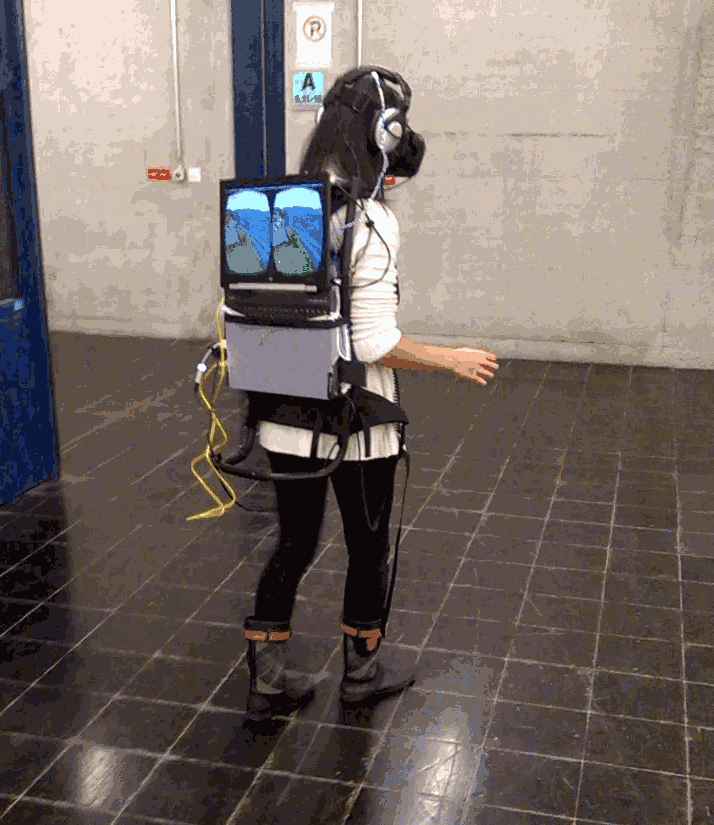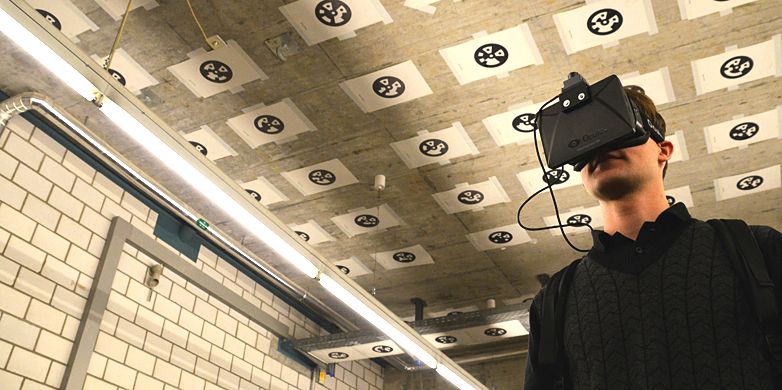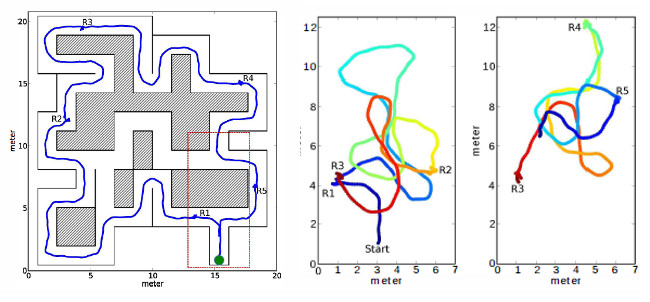Feedback for Real-Walking VR
ETH Zurich Fall 2015
For my semester project at ETH Zurich, I developed feedback mechanisms for a real walking virtual reality system under the advisorship of Professor Andreas Kunz and Markus Zank. In real-walking virtual reality, your movements in a digital environment are enabled by physically walking through a space. An upward facing camera was attached to an Oculus Rift headset to pick up known landmarks on the ceiling in a large room. Based upon which visual landmarks were seen in the camera's frame, the headset can be localized. In our system, a user is given a a virtual reality headset and a pair of headphones and is encouraged to explore the virtual world.
When exploring a potentially infinite virtual world while real walking in a constrained physical space, precautions must be taken so that users don't run into a physical wall. The virtual world might seem open and clear, but if an obstacle exists in the physical space, the user won't be able to avoid it. Redirection algorithms were developed that allow a user to be steered away from physical obstacles unknowingly. This is done by subtly changing the view frame of the headset to induce a user to walk in arcs instead of in straight lines and to scale the rotations that a user makes into larger or smaller rotations. While these techniques are preferred since they don't interfere with user immersion, if a user is very close to a collision, a representation of the physical walls appear in the virtual space and indicate for the user to turn away.
Another problem that exists is that users can walk through digital walls, thus ignoring any maps or objectives that might exist in the virtual environment. This can cause scenes to become very difficult to design and render, since a user's movements can't be constrained. I developed feedback mechanisms and algorithms to deincentivize users from walking through digital walls. Some of these mechanisms are very simple, like flashing a warning or turning the screen black. Others are very complex, such as teleporting the user outside of the digital wall so that they face the opposite direction. These complex techniques were combined with redirections away from physical walls. I also wrote algorithms to determine if the wall collision was intentional or accidental, since activating these mechanisms for accidental wall collisions has the potential to frustrate users.
I created a user study to test out these mechanisms. The study puts users in scenarios where they would accidentally or intentionally collide with digital walls. Different feedback mechanisms are given to the user with the goal of training the user into operating with the system in the correct way. Through postering campus with some advertisements and reaching out to friends, I had 30 users test out the mechanisms I designed and I was able to collect data about which mechanisms worked best in various scenarios.


